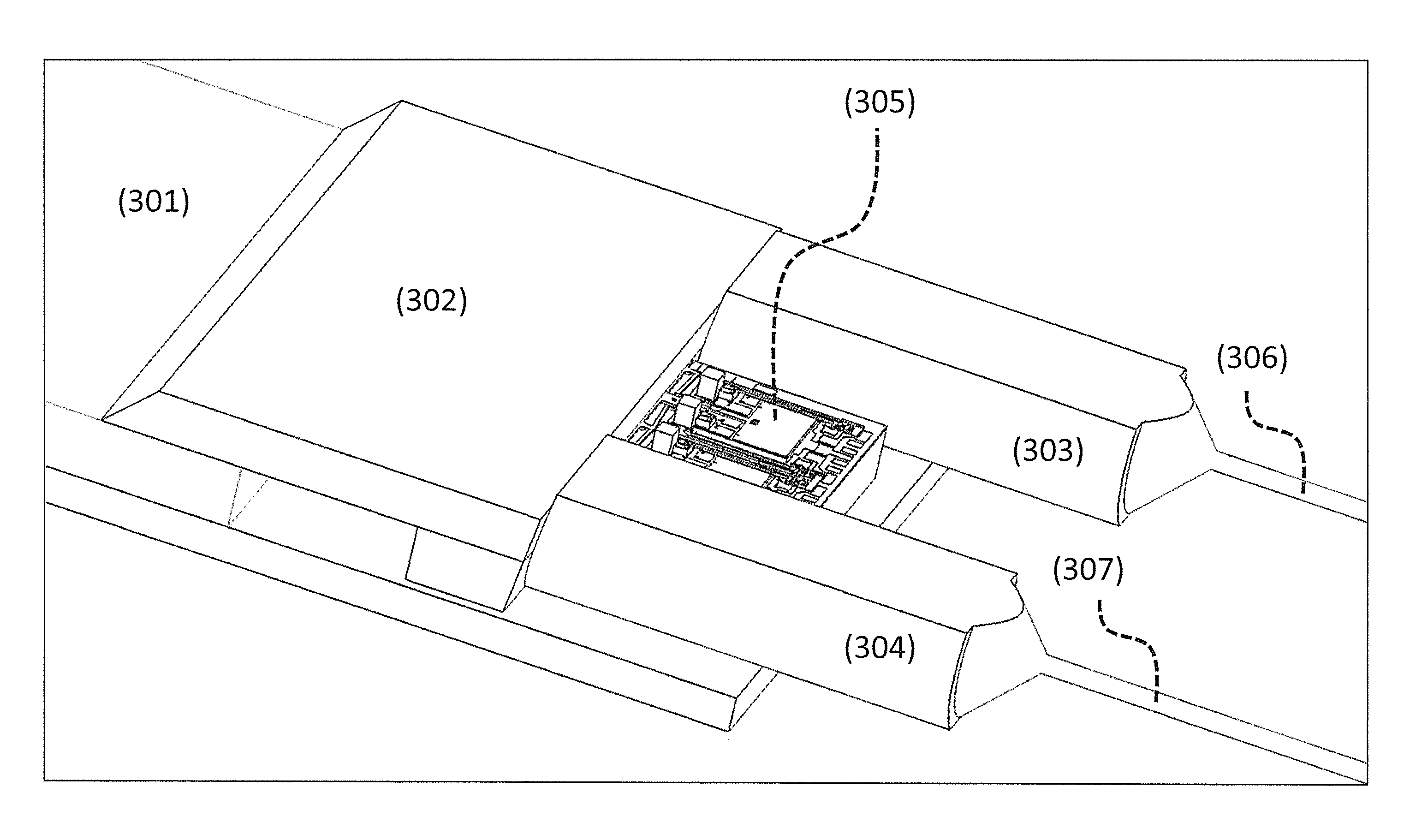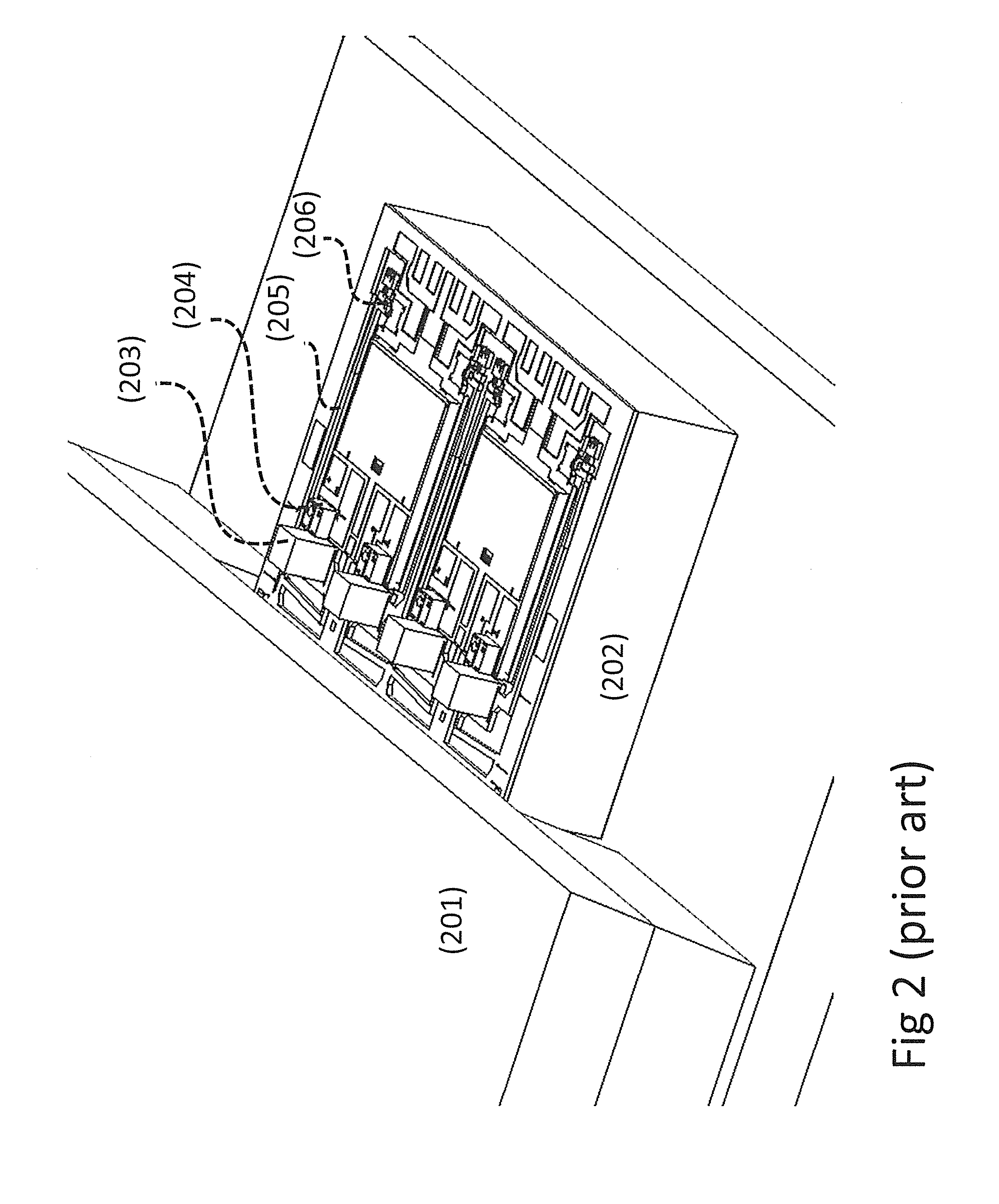Planar lightwave circuit active connector
a technology of active connectors and lightwave circuits, applied in multiplex communication, optical elements, instruments, etc., can solve the problems of complex optical line cards and transport systems, large, and inconvenient assembly, and achieve the effect of simple and efficient, simple method of attaching the assembly
- Summary
- Abstract
- Description
- Claims
- Application Information
AI Technical Summary
Benefits of technology
Problems solved by technology
Method used
Image
Examples
Embodiment Construction
[0032]Silicon modulators are readily fabricated using standard processes in foundries and therefore can be used to generate modulated signals that can transmit information between electronic modules. As mentioned previously, it is extremely difficult to generate light in silicon, and therefore a separate light source, for example a laser, is generally needed that provides light coupled into the silicon photonics chip with the modulators. Similarly, the modulated light is coupled out of the chip and into fiber(s) to transmit the information. One way of coupling light in and out of very tight silicon waveguides is with a grating coupler, which can only operate efficiently at one wavelength. Given these limitations of standard silicon photonics, often a single high power external laser is used as the source for multiple modulators. As input coupling into the waveguides is challenging, coupling a single laser is simpler than coupling multiple lasers. This means that for multiple lanes, ...
PUM
 Login to View More
Login to View More Abstract
Description
Claims
Application Information
 Login to View More
Login to View More - R&D
- Intellectual Property
- Life Sciences
- Materials
- Tech Scout
- Unparalleled Data Quality
- Higher Quality Content
- 60% Fewer Hallucinations
Browse by: Latest US Patents, China's latest patents, Technical Efficacy Thesaurus, Application Domain, Technology Topic, Popular Technical Reports.
© 2025 PatSnap. All rights reserved.Legal|Privacy policy|Modern Slavery Act Transparency Statement|Sitemap|About US| Contact US: help@patsnap.com



